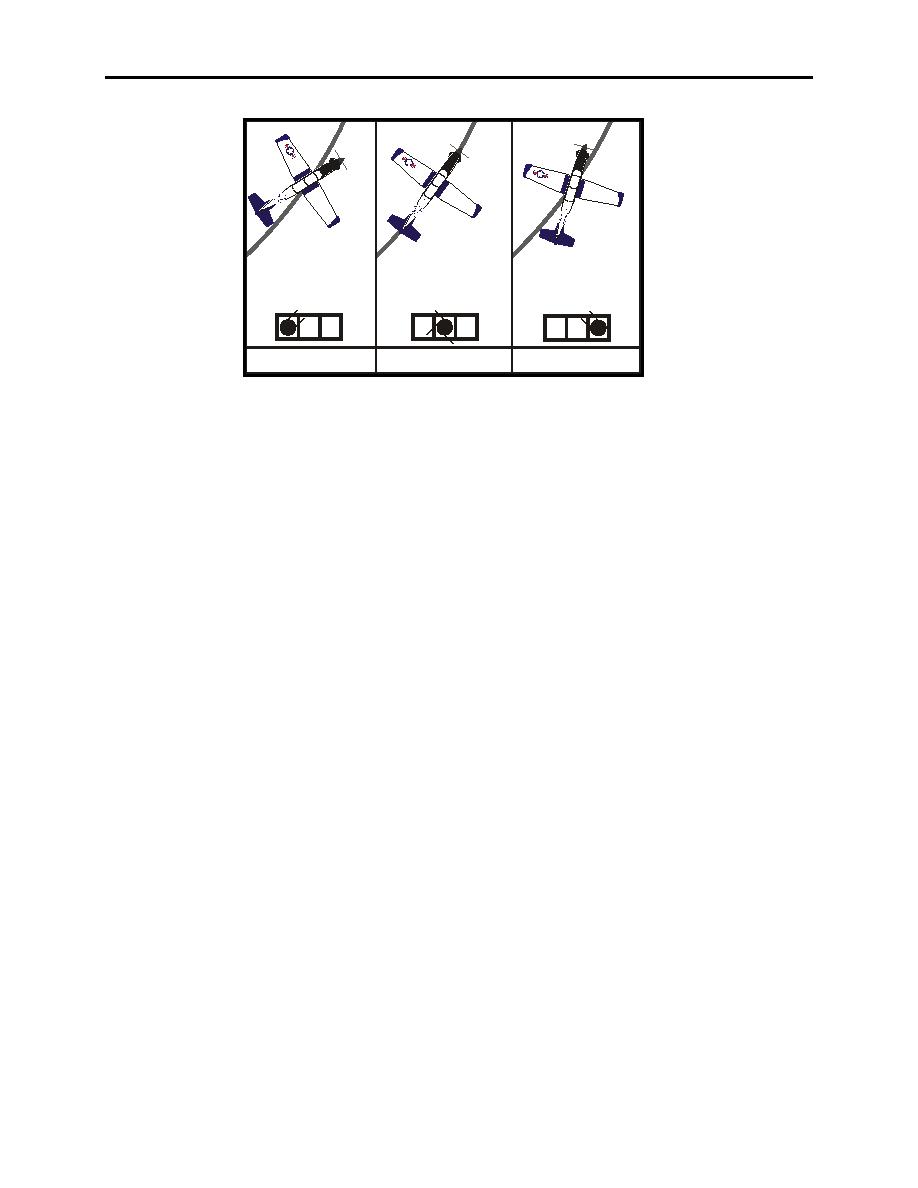 |
|||
|
|
|||
|
Page Title:
Figure 3-5 Coordinated vs. Uncoordinated Turns |
|
||
| ||||||||||
|
|  CHAPTER THREE
T-6A CONTACT
Slip
Coordinated
Skid
Figure 3-5 Coordinated vs. Uncoordinated Turns
309.
CLIMBING/DESCENDING FLIGHT
For an automobile to go uphill at the same speed as that being maintained on a level road, the
driver must "step on the gas;" meaning increase power. If the driver does not increase power, the
automobile might still climb up the incline, but will gradually lose speed. Similarly, an aircraft
can climb at a cruise power setting, sacrificing speed, or it can, within certain limits, climb with
added power and no sacrifice in speed. Thus, there is a definite relationship between power,
attitude, and airspeed.
The primary factor affecting an aircraft's ability to climb is the amount of excess power
available; meaning, the power available above that required for straight and level flight. When
transitioning from level flight to a climb, the forces acting on the aircraft go through definite
changes. After the addition of power, an increase in lift occurs when back pressure is applied to
the elevator control. This initial change is a result of the increase in the AOA, which occurs
when the aircraft's pitch attitude is raised, resulting in a climb. When the inclined flight path and
climb speed are established, re-trim the aircraft, and it will remain in a steady coordinated climb.
To maintain the same airspeed in the climb turn, power must be increased or the nose attitude
lowered to compensate for the loss of lift due to bank (the same in a level turn).
When power is reduced during straight and level flight, thrust needed to balance aircraft drag is
no longer adequate. In order to maintain the same airspeed, the nose attitude must be lowered,
initiating a descent. In a nose down attitude, gravity now has a pull on the aircraft in the same
direction you are going; in effect, the airplane is going "down hill."
3-8
FUNDAMENTAL CONCEPTS
|
|
Privacy Statement - Press Release - Copyright Information. - Contact Us |